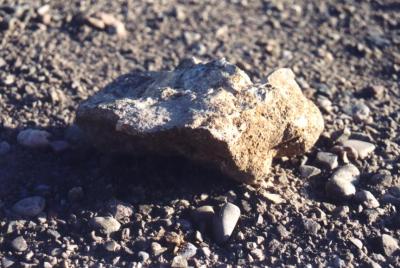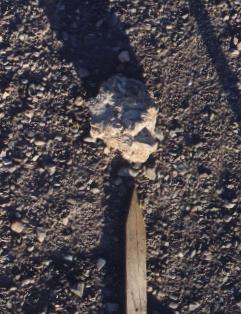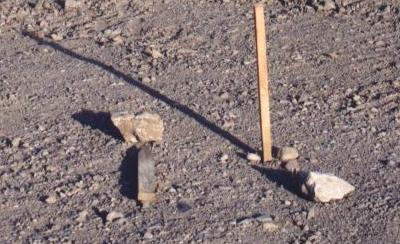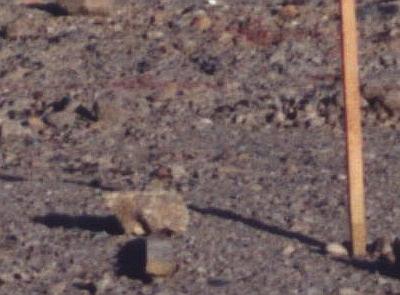|
Below are photographs of a rock taken from various distances away.
The sun elevation in these photographs is approximately 12°
comparable to the sun elevation in many Apollo lunar surface
photographs. The terrain is reasonably flat and level. The camera is
approximately 4 feet (1.5 m) above the surface, except in Figs. 1 and
2. The supine wooden stake in Figs. 2-4 identifies the horizontal
aspect of the optical axis. An informal wooden gnomon is provided in
Figs. 3 and 4 to cast a reasonably precise reference shadow. Other
photo sets are provided for shadow angles of approximately 15° and 45°.

|
|
Fig. 1 - A low angle view of the rock depicted in these
photographs.
|
|
|

|
|
Fig. 2 - View from directly overhead to establish
actual direction of shadow relative to optical axis. The shadow at
upper right is cast by the gnomon.
|
|
|

|
|
Fig. 3 - View from approximately 25 feet (8 meters)
away. The difference between the rock shadow and the gnomon shadow
begins to appear.
|
|
|

|
|
Fig. 4 - View from approximately 50 feet (17 meters)
away. The difference between the gnomon shadow and the rock shadow
is pronounced. The rock shadow appears nearly horizontal.
|
|
|
The gnomon is not vertical in the photos, which limits its
applicability as a reference for "true" shadow direction.
Nevertheless the divergence between the gnomon shadow and the rock
shadow as distance increases illustrates the danger of generalizing
shadow direction from irregular and partially occluded shadows.


| 











